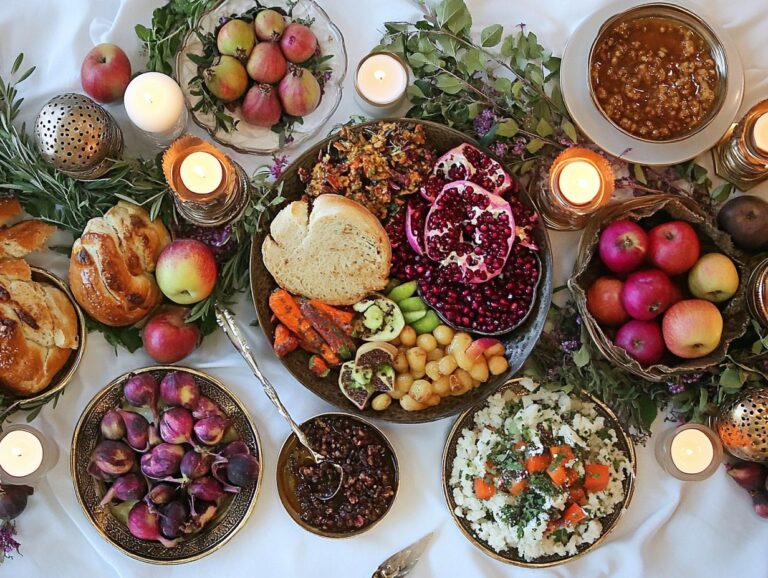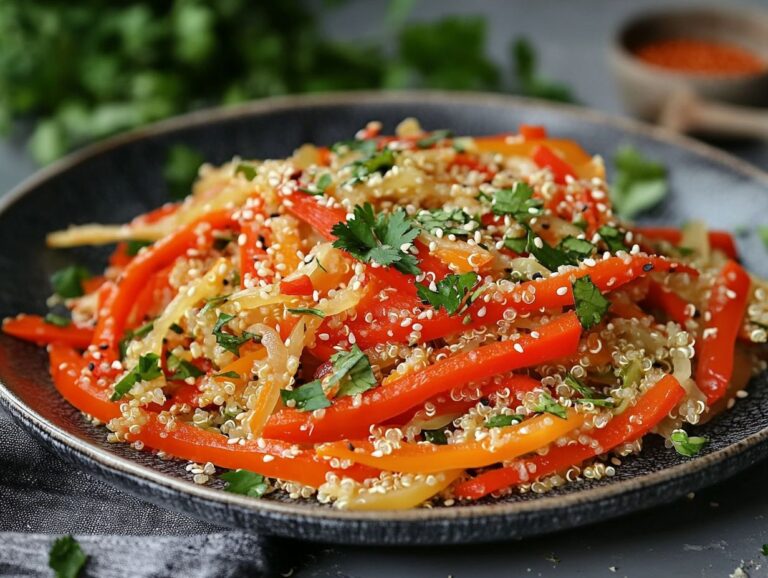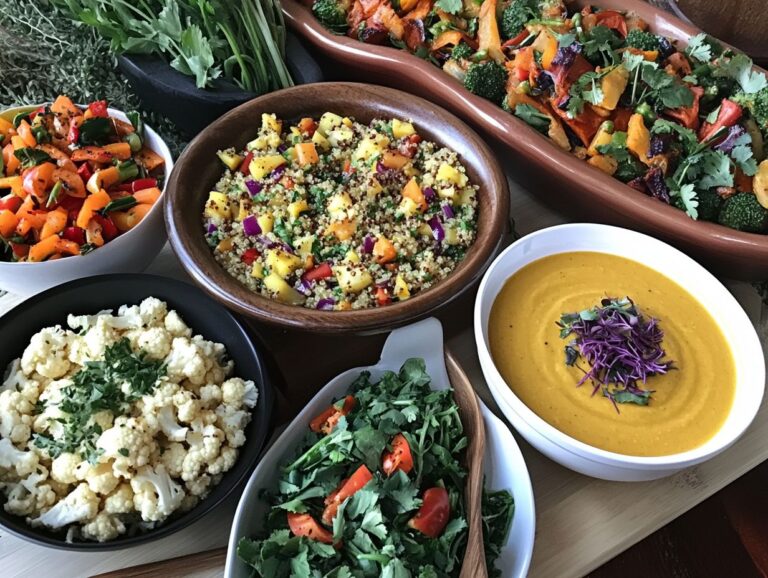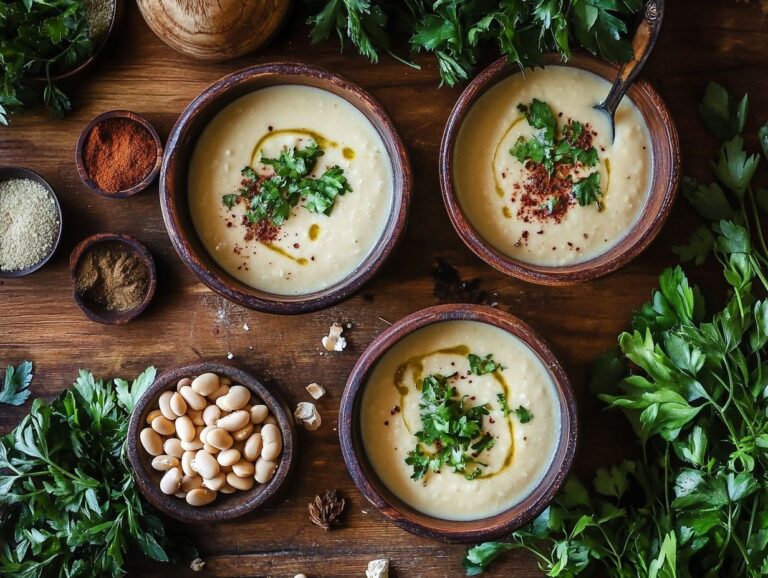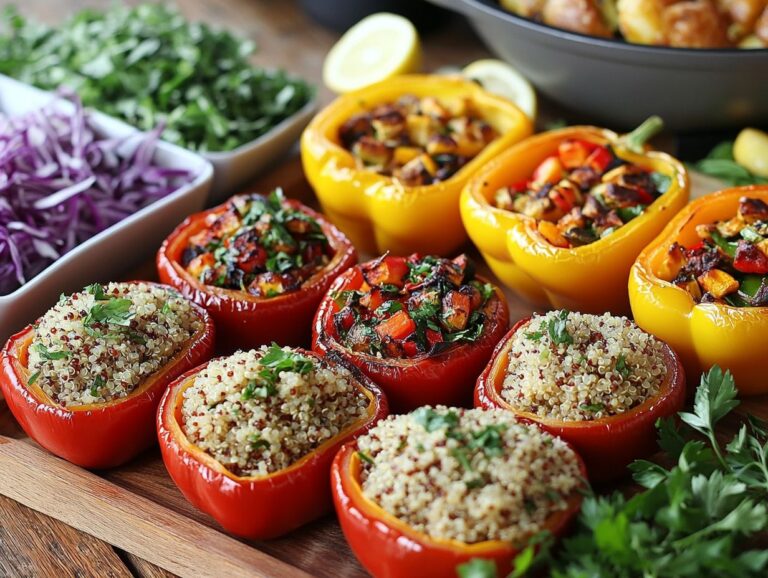**Oil-Free Salad Dressings: Benefits, Key Ingredients, Essential Substitutions, and Recipes**
This article explores the advantages of oil-free salad dressings, outlines the basic ingredients needed for raw vegan oil-free salad dressings, and highlights essential substitutions for customizing the flavor and texture of homemade dressings. Additionally, it includes five delicious recipes—Lemon Tahini, Garlic Miso, Maple Mustard, Mango Lime, and Creamy Avocado—complete with nutritional values.
Benefits of Oil-Free Salad Dressings
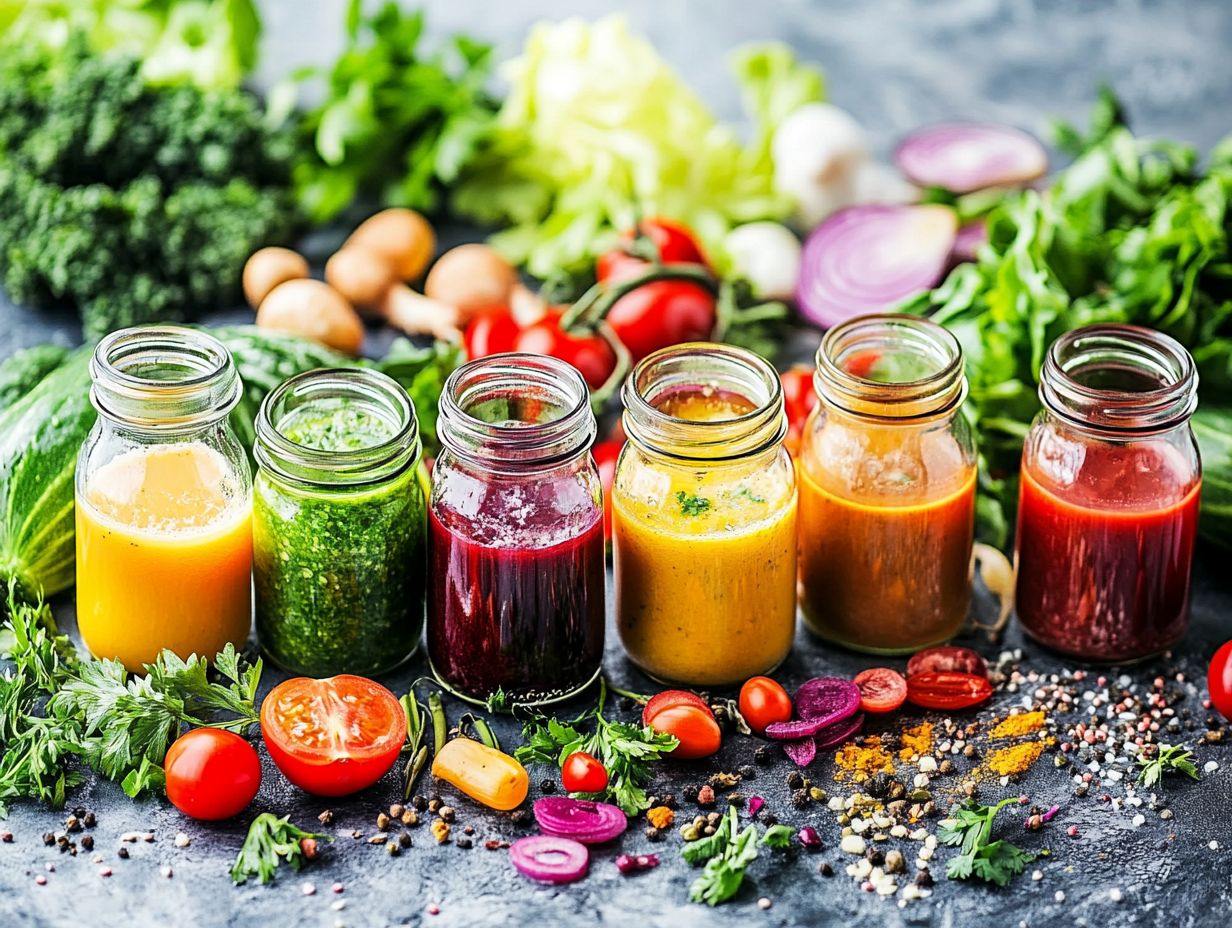
Oil-free salad dressings have gained popularity among health-conscious individuals due to their positive nutritional impact on meals. These plant-based dressings are lower in calories and crafted from wholesome ingredients that align with a raw vegan lifestyle.
The absence of oil allows for a focus on fresh vegetables, flavor enhancers, and whole foods rich in nutrients, which are essential components of clean eating. Oil-free dressings cater to various dietary preferences, including vegan and gluten-free diets, making them suitable for anyone seeking to enhance their health and well-being through diet.
Along with their appealing taste and mouthfeel, oil-free dressings can aid in weight management by keeping calorie counts lower while preserving palatability.
Instead of relying on calorie-dense oils, these dressings utilize fresh herbs, spices, and whole foods like avocado or tahini, which provide healthy fats and essential nutrients. These ingredients not only promote cardiovascular health by improving cholesterol levels but also contribute flavor, antioxidants, and essential nutrients to dishes.
By incorporating these nutrient-dense foods into one’s diet, individuals can enjoy delicious meals while reaping the health benefits associated with a healthy diet.
Basic Ingredients for Raw Vegan Salad Dressings
The best ingredients for raw vegan salad dressings consist of whole foods such as nuts, seeds, and fresh vegetables. These basic components are combined in a food processor or blender and blended until creamy.
Key ingredients, including cashew nuts, tahini, apple cider vinegar, and fresh lemon juice, provide a delicious and nutrient-rich flavor. These nutritious whole foods supply essential vitamins and minerals.
By utilizing high-quality whole food ingredients, such as sunflower seeds, you can create homemade raw vegan salad dressings that naturally enhance the flavor of your salads while supporting a clean eating and vegan lifestyle.
Essential Ingredients and Substitutions
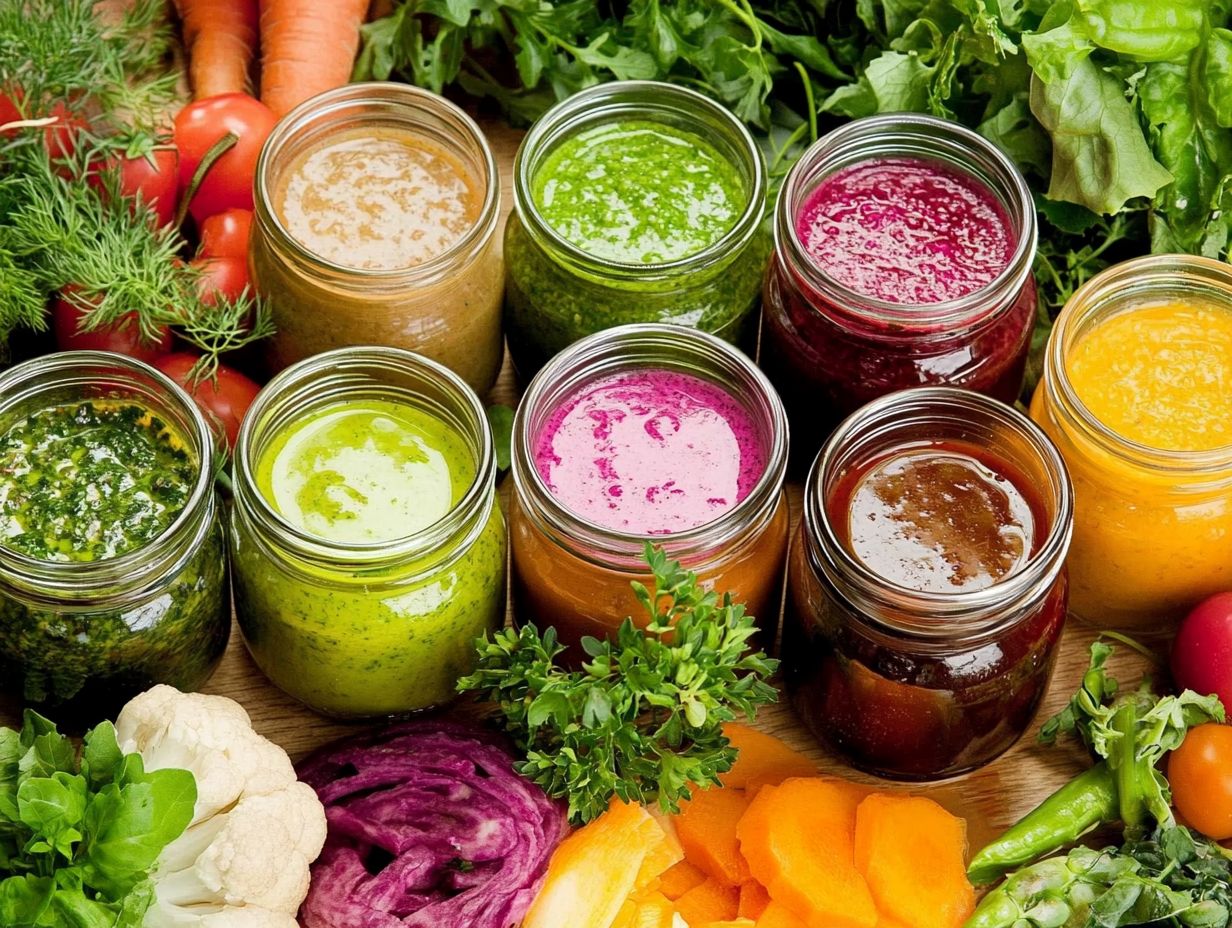
The most common ingredients in raw vegan salad dressings and their substitutes include the following:
- Oil: The typical oils used in salad dressings are extra virgin olive oil, avocado oil, and cold-pressed nut oils. Alternatives to these oils include blended soy or nut milk, coconut cream, or pureed avocado.
- Vinegar: Common types of vinegar for salad dressings include balsamic vinegar, apple cider vinegar, rice vinegar, and white wine vinegar. As substitutes, you can use lemon juice, lime juice, or juice from other fresh fruits.
- Sweetener: The most frequently used sweeteners in salad dressings are maple syrup and honey. Alternatives to these sweeteners include agave syrup, coconut sugar, fruit juice, date syrup, or simply omitting the sweetener altogether.
- Herbs and Spices: Common herbs and spices found in salad dressings include garlic, ginger, turmeric, fresh herbs, and dried spices. Alternatives include using different herbs or spices or adjusting their quantities.
- Salt: Sea salt is the most commonly used salt in salad dressings. Alternatives to salt include miso paste, capers, or other salty ingredients.
Top 5 Oil-Free Salad Dressing Recipes
The following five oil-free salad dressing recipes highlight the vibrant flavors, colors, and nutritional benefits of raw vegan meals. They demonstrate how to create quick, oil-free dressings that are perfect for meal prep or any occasion. Here are some easy and nutritious oil-free salad dressing recipes:
- Lemon Tahini Oil-Free Salad DressingThis recipe combines lemon juice and tahini to create a creamy and tangy dressing.Ingredients:
- 1/4 cup tahini
- 1/4 cup lemon or lime juice
- 2 tbsp water
- 1 tbsp maple syrup
- 1/2 tsp garlic powder
- 1/2 tsp salt
Instructions:
Combine all ingredients in a blender or food processor. Add more water to achieve your desired consistency.
- Cilantro Avocado Oil-Free Salad DressingAvocado adds healthy fats and creaminess to this delicious dressing.Ingredients:
- 1 ripe avocado
- 1/2 cup chopped fresh cilantro
- 1/4 cup lime juice
- 1/4 tsp cumin
- Salt and pepper to taste
Instructions:
Blend all ingredients until smooth, adding water as needed to reach the desired consistency.
- Creamy Avocado DressingThis dressing uses avocado instead of oil to create a thick and creamy texture.Ingredients:
- 1 ripe avocado
- 1/4 cup water
- 2 tbsp lemon juice
- 1 clove garlic
- Salt and pepper to taste
Instructions:
Blend all ingredients until smooth, adding more water to thin if necessary.
- Sweet and Spicy Maple Dijon Oil-Free Salad DressingThis dressing combines maple syrup and Dijon mustard for a sweet and tangy flavor.Ingredients:
- 1/4 cup apple cider vinegar
- 1/4 cup maple syrup
- 2 tbsp Dijon mustard
- 1/4 cup soy sauce
- 1/4 cup water
Instructions:
Mix all ingredients together until well combined.
- Creamy Avocado Oil-Free Salad DressingThis oil-free dressing recipe also uses avocado to achieve a thick and creamy consistency.Ingredients:
- 1 ripe avocado
- 1/4 cup water
- 2 tbsp lemon juice
- 1 clove garlic
- Salt and pepper to taste
Instructions:
Blend all ingredients until smooth, adding more water to thin if needed.
These recipes are not only simple to prepare but also provide a delicious way to enhance your salads while maintaining a healthy diet.
Recipe 1: Lemon Tahini Dressing
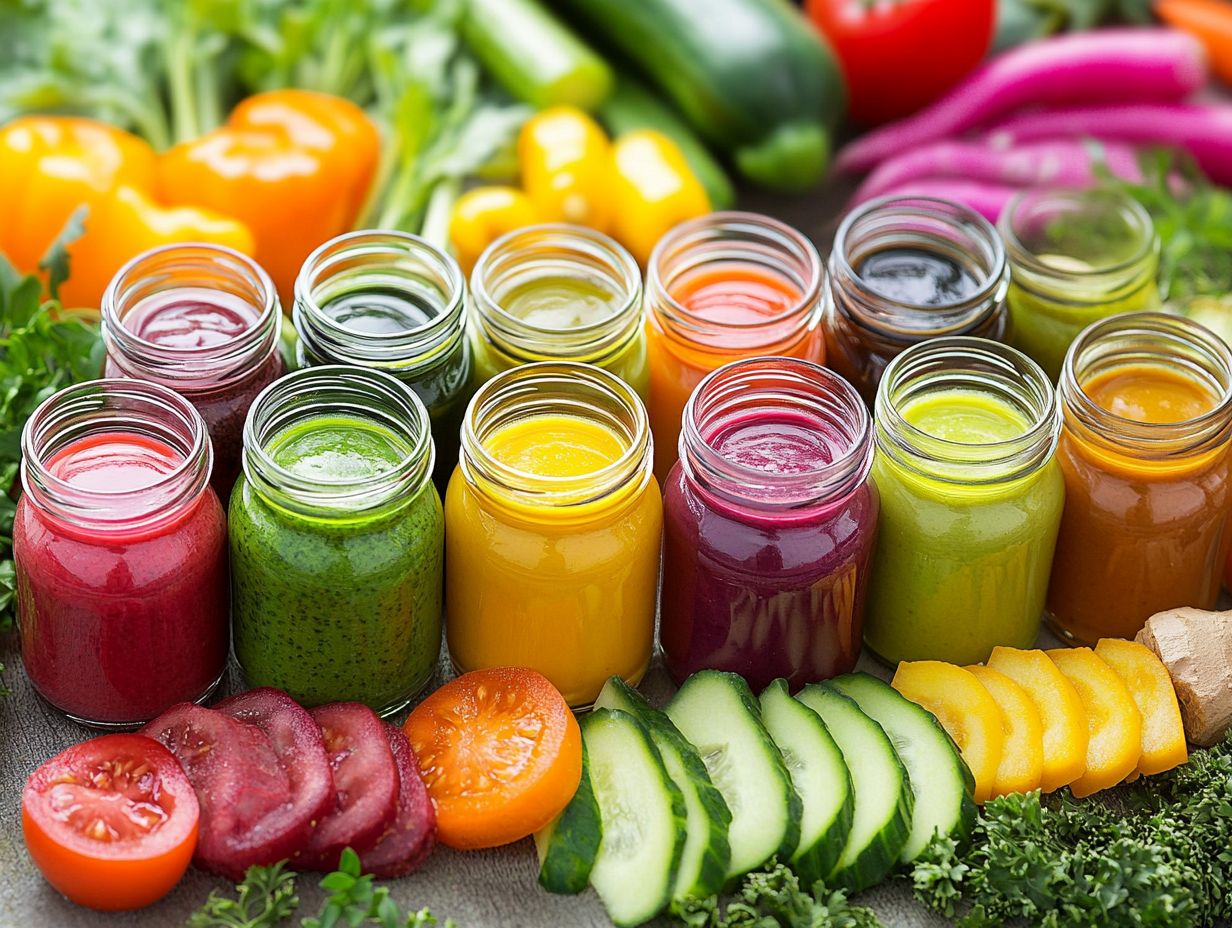
Lemon Tahini Dressing is a raw vegan dressing made from tahini, fresh lemon juice, and water. This dressing is rich in healthy fats and provides a good source of calcium, magnesium, and other minerals from tahini, along with vitamin C from the lemon juice. It serves as a simple and nutritious addition to various salads, enhancing the flavor and nutrient content of raw vegetables.
Vegan Lemon Tahini Dressing Recipe
Ingredients:
- 1/4 cup tahini
- Juice of 1 lemon (freshly squeezed)
- 2 tablespoons water (additional may be needed)
- 1 clove garlic (minced)
- Salt and pepper (to taste)
Instructions:
- In a bowl, combine the tahini, lemon juice, water, and minced garlic.
- Whisk the mixture until smooth, adding more water if a thinner consistency is desired.
- Season with salt and pepper to taste.
- Serve the dressing over salads, grain bowls, or use it as a dip.
Serving Size: 1/4 cup (63 g)
Nutrition Facts:
- Calories: 180
- Carbohydrates: 12 g
- Fiber: 5 g
- Protein: 5 g
- Fat: 13 g
Preparation Time: 5 minutes
Recipe 2: Avocado Cilantro Dressing
Avocado Cilantro Dressing is a creamy salad dressing that adds flavor and freshness to any salad or salad-type meal, making it an excellent choice for a raw vegan diet. This dressing combines the creaminess of avocado with fresh cilantro and lime juice, tantalizing the taste buds while providing a good source of healthy fats and antioxidants.
Its creamy base makes it a delightful addition to raw salads or a delicious dip for whole foods, promoting healthier eating habits and encouraging meals rich in plant nutrition.
Ingredients/How to Prepare Avocado Cilantro Dressing:
- 1 ripe avocado
- 1 handful of fresh cilantro leaves
- Juice of 1 lime
- 2 tablespoons of olive oil
- 1 clove of garlic
- Salt to taste
To prepare the dressing, blend these ingredients together until smooth, adding a little water if necessary. This quick and easy salad dressing enhances the flavor of salads and sandwiches while providing nutritional benefits.
Avocados are a great source of monounsaturated fats, vitamin E, and potassium, while cilantro is rich in minerals and is known for its detoxifying properties. Use Avocado Cilantro Dressing drizzled over grain bowls, on grilled veggies, or as a tasty spread for sandwiches.
Recipe 3: Balsamic Vinaigrette
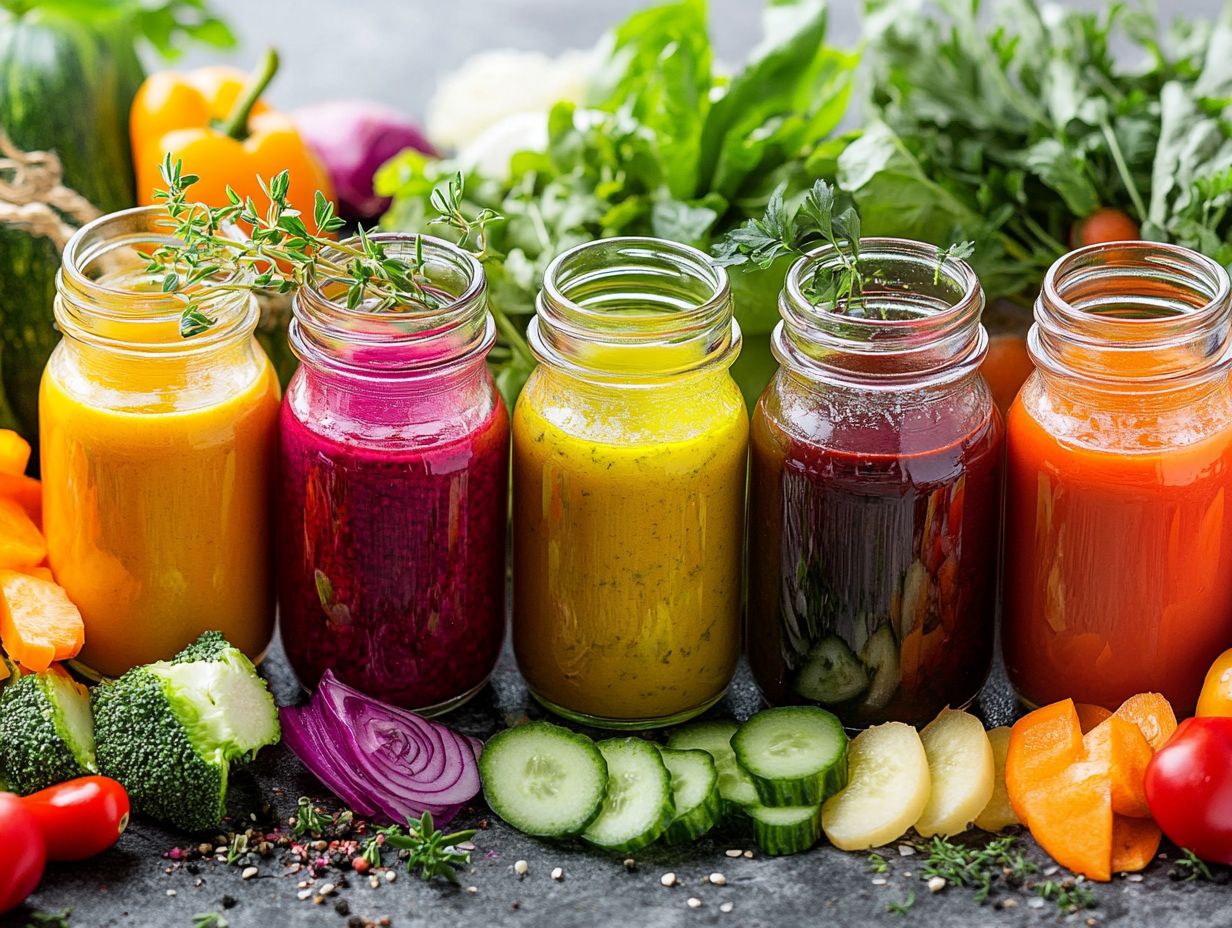
Balsamic Vinaigrette is a classic dressing that adds a delightful tang to salads, making it a favorite among raw vegan enthusiasts. This dressing combines balsamic vinegar, fresh herbs, and a touch of sweetness to balance the acidity, resulting in a flavorful enhancement for various salad mixes.
Easy to prepare, this vinaigrette can be whisked together in just minutes, making it a convenient option for quick meals or meal prep. The rich flavor profiles of balsamic vinegar paired with vibrant herbs add depth to any salad, ensuring a delightful and nutritious dining experience. Use it as a dip or sauce to enhance the flavor of raw vegetables and dishes.
Whether you’re crafting a simple greens salad or incorporating proteins like chicken or chickpeas, this salad dressing adapts beautifully, elevating the overall dish. For those who prefer a sweeter taste, a drizzle of honey or maple syrup can easily adjust the flavor, while adding a splash of lemon juice can enhance the acidity for a sharper profile. Adding fresh herbs like basil or mint can also enhance its versatility.
Beyond salad applications, consider using this versatile dressing as a marinade for roasted vegetables or a dip for bread, showcasing its potential to complement a variety of culinary creations. The use of fresh vegetables and herbs in this mixture can provide additional health benefits and improve the overall flavor profile.
Additionally, balsamic vinegar offers numerous health benefits, including antioxidant properties and potential blood sugar regulation, making this vinaigrette not only delicious but also beneficial. Emphasizing a plant-based and oil-free approach can further enhance its nutritional value.
Recipe 4: Dijon Mustard Dressing
Dijon Mustard Dressing boasts a strong savory flavor, making it a popular choice for salads. This recipe is one of the top dressings for a vegan diet. A blend of Dijon mustard, apple cider vinegar, and fresh herbs creates a flavorful dressing that adds both creaminess and tang, enhancing the taste of raw vegetables. The robust flavor of mustard can be adjusted to elevate the taste of various salads. You can also add nutritional yeast for an extra umami kick.
Making this dressing is incredibly simple; it requires just whisking together Dijon mustard and apple cider vinegar in a bowl, with the ratio of each ingredient tailored to achieve your desired level of creaminess versus tanginess. The mustard not only adds zest but also makes this dressing a low-calorie option rich in antioxidants. Additionally, vinegar aids in the formation of digestive acids and may help regulate blood sugar levels. Freshly minced garlic or ginger can also be added for additional depth of flavor.
This dressing is highly customizable; you can incorporate your favorite herbs such as:
- dill
- parsley
- chives
You can also add garlic or honey for sweetness, or other spices to create a dressing that perfectly suits your personal tastes. This flexibility allows you to tailor the salad itself to meet various healthy dietary needs, accommodating everything from simple to gourmet eating patterns. For those focusing on holistic health, incorporating fresh produce and whole foods can maximize nutrient intake.
Recipe 5: Mango Lime Dressing
Mango Lime Dressing is a raw vegan-friendly salad dressing that is both refreshing and colorful, featuring a delightful tropical flair. The natural sweetness of ripe mango, combined with zesty lime juice, creates a deliciously vibrant dressing that enhances the flavors of raw vegetables. Rich in antioxidants and vitamins, this dressing not only brightens any salad but also contributes to a wholesome eating experience. It is perfect for drizzling over mixed greens or using as a marinade for raw vegetables. This dressing pairs wonderfully with avocado and other salad toppings for additional creaminess and flavor.
This recipe utilizes a ripe baby mango to add creaminess, regardless of whether you choose to prepare the dressing with a blender or a mortar and pestle. Ripe baby mangoes are selected for their high sugar content, which is essential for achieving the perfect balance with the tangy lime. To enhance the flavor profile, adding a dash of coconut aminos or sea salt can provide additional depth.
To make the dressing, simply blend peeled and diced ripe baby mango with freshly squeezed lime juice and a pinch of salt. The result is a thick, creamy, and luscious dressing that pairs beautifully with salad toppings such as:
- Avocado
- Cherry tomatoes
- Nuts
This dressing encourages creativity, as it easily adapts to seasonal ingredients, such as grilled corn in the summer or roasted root vegetables in the fall. Fresh herbs like cilantro and parsley can also be incorporated to enhance its freshness and flavor.
Tips for Making and Storing Oil-Free Salad Dressings
Preparing and storing oil-free salad dressings is a simple process, and taking extra care in their preparation and storage can significantly enhance their flavors and prolong their freshness. Utilizing fresh ingredients and proper techniques can maximize the health benefits and overall taste of your dressings.
By following the appropriate preparation techniques and storage guidelines, you can improve both the taste and shelf life of these dressings, which offer a nutritious and flavorful addition to raw vegan meals. Incorporating macro nutrients and using ingredients like tahini or avocado can enhance the dressing’s texture and nutritional content.
Additionally, incorporating a variety of recipe modifications can keep oil-free salad dressings interesting and exciting. Experimenting with different spices, sweeteners like date syrup, or adding pureed fruits can create unique flavors and textures.
Storage Guidelines and Creative Variations
Proper storage guidelines for oil-free dressings are essential to preserve their quality and ensure they remain fresh and flavorful, making them a vital part of your meal prep workflow. Keeping the dressings in airtight containers and using fresh produce can help maintain their vibrant colors and flavors.
Most oil-free dressings can be stored in the refrigerator for up to a week if kept in airtight containers. It is important to check them regularly for signs of spoilage, such as changes in color, texture, or smell. Mixing in lemon juice or apple cider vinegar can help extend their shelf life and maintain their freshness.
Regular refrigeration and experimenting with different ingredient combinations—such as adding citrus for brightness or avocado for creaminess—can significantly enhance the dressings’ quality, nutritional content, and taste. Using a blender to emulsify the ingredients can also improve the consistency and create a creamy texture.
